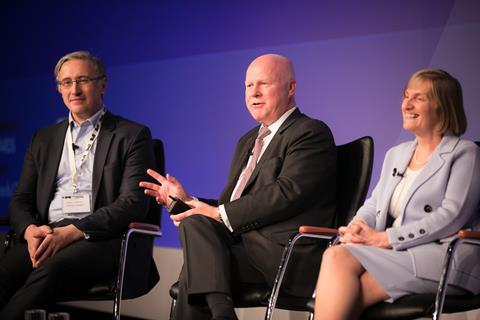An ambitious project to pool pension assets for London’s 32 public sector funds will fail to achieve its objectives without a major overhaul of its governance structure, according to a damning report from consultancy Willis Towers Watson.
The firm was brought in to conduct a review of the London CIV (LCIV), the authorised asset manager set up by London’s pension funds to pool their £34.5bn (€39bn) in assets and drive down costs.
The subsequent report, circulated to London’s Local Government Pension Schemes (LGPS) last month, alleged that some briefings on the LCIV’s development had been based on political affiliations, despite the cross-party, non-political nature of the vehicle. Each LGPS fund is overseen by a board of local councillors.
The LCIV late last year was forced to issue a statement denying that it had advised against investing in UK infrastructure in case of a change of government in the country.
Some of the pension schemes involved in the LCIV had expressed “significant distrust” in other stakeholders and were looking at joining other pools instead, according to the Willis Towers Watson report.
Despite the LCIV having launched 12 funds and attracted more than £6bn since it received regulatory approval in 2016, the vehicle has suffered major setbacks in recent months with the departures of CEO Hugh Grover and CIO Julian Pendock .
“To move forward effectively, LCIV and all stakeholders need to look for an opportunity to reset their relationship to facilitate better working relationships and engagement”
Willis Towers Watson
Tim Mitchell, Adam Gillett and Oliver Faizallah, investment consultants at Willis Towers Watson and co-authors of the report, said the LCIV was “under-resourced and underfunded”, with “gaps across all aspects of operation”.
They warned that “it is not at all apparent that it will be able to deliver on the original intention of its 32 local authority shareholders to bring their collective [assets] under a common pooling vehicle”.

The report reflects comments made by former CEO Grover at IPE’s annual conference in November. Speaking a few weeks after his departure, he said the vehicle was suffering from a lack of clarity around its purpose and vision.
In particular, Grover highlighted the government’s desire to make pooling of assets mandatory – initially the LCIV was designed as an optional pooling vehicle.
A poll of London pension fund staff and committee members – conducted as part of Willis Towers Watson’s review – showed that stakeholders did not agree that the London CIV or its oversight bodies had clear mandates or objectives.
The verdict
“Three years after its incorporation, LCIV finds itself in an invidious position. It is attempting to deliver on a complex and challenging task, under-resourced and underfunded, while juggling the competing interests of multiple stakeholders, not all of whom are fully engaged and who seem to be growing increasingly disgruntled.
“Compounding pressure on it has been the recent departures of a number of key staff. In the absence of some circuit-breaking change it is not at all apparent that it will be able to deliver on the original intention of its 32 local authority shareholders to bring their collective [assets] under a common pooling vehicle…
“The challenge facing LCIV and the 32 shareholders is very significant in delivering on its pooling objectives. The stakeholder mapping is complex, as is the operational context and regulatory environment, let alone the pension and investment challenge itself. Against this background, LCIV needs to be sufficiently resourced or it is surely set up to fail.”
- from Willis Towers Watson’s independent governance review of the LCIV, presented to local authorities in December
Major changes required
Willis Towers Watson urged the LCIV and its two oversight committees to overhaul their terms of reference and provide better clarity of purpose as “an absolute priority”.
The consultancy said it had received mixed messages from different stakeholders regarding how they thought the LCIV would operate. Some believed it was set up as a fund manager, some as a procurement vehicle, and others as a fiduciary manager with responsibility for strategy as well as manager selection.
While there was a collective will for the project to succeed, Willis Towers Watson reported, stakeholders had so far underestimated the compromises involved in ensuring that success.
The LCIV should also instigate an independent review of costs and resources, the consultancy said.
Currently, the LCIV is overseen by two committees (see box below).
“We are actively taking on board the findings of our governance review and are developing recommendations”
Mark Hyde Harrison, London CIV
“A decision should be taken to balance representation and effective committee functioning,” Mitchell, Gillett and Faizallah wrote. “Either everyone is involved, which leads to inefficient committees, or a select few are involved, which leads to a loss of representation.”
The report authors recommended fewer meetings of full committees, with more duties delegated to smaller sub-committees and working groups. These should be supported by a “well-resourced” secretariat function.
Finally, the report emphasised the importance of cultivating trust between the various parties involved in the LCIV’s operations, including through better use of a “client portal” on the LCIV’s website.
“To move forward effectively, LCIV and all stakeholders need to look for an opportunity to reset their relationship to facilitate better working relationships and engagement,” the authors wrote.
In a statement, Mark Hyde Harrison, interim CEO of London CIV, said: “London CIV has achieved a great deal since it was established two and a half years ago and we continue to work hard alongside London boroughs to build on our success and respond to the challenges we are facing.
“We are actively taking on board the findings of our governance review and are developing recommendations with our colleagues in the boroughs that we will put to London borough leaders in March.
“London was a pioneer in establishing pooled arrangements and it makes sense to take stock now on how best to deliver the original vision for the CIV in the light of the wider changes that are happening in local authority pension fund management.”
What is the London CIV?
The London CIV has its roots in attempts to consolidate all of the UK capital’s public sector pension schemes into one entity. Hugh Grover led the drive to pool the assets of 33 (now 32) London borough pension schemes and was made CEO of the London CIV when it was incorporated in 2015.

The work foreshadowed the UK government’s policy drive that year to encourage LGPS to collaborate more, creating pools of £25bn-£30bn. In the process they were expected to reduce costs, increase efficiencies and improve the LGPS’ capacity to invest in infrastructure.
The LCIV provides the investment infrastructure and selects third-party managers to run the assets, negotiating hard on costs. It now offers 12 funds, including UK and global equity products and multi-asset funds. It has also agreed a special pricing deal with passive providers for its member funds.
This work so far stands to save participating LGPS funds roughly £6m a year, according to the LCIV.
The staff are overseen by two groups of representatives from the 32 founding pension funds: the Pensions Sectoral Joint Committee, made up of councillors from each of the 32 funds, and the Investment Advisory Committee, comprising 24 pension and finance officers from member funds.
The LCIV is preparing to launch fixed income products, according to council documents, and staff are researching infrastructure opportunities and low-carbon funds.












No comments yet